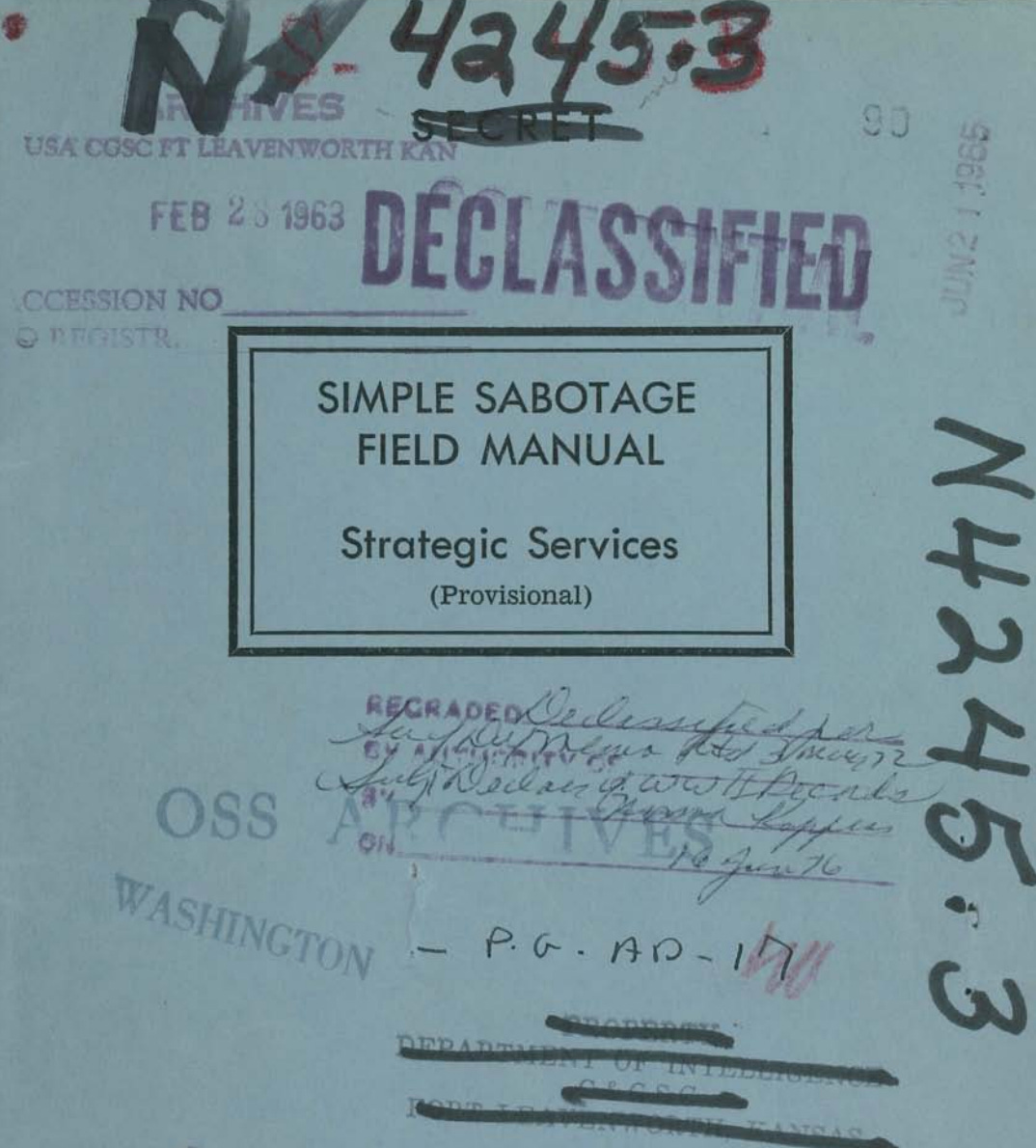Why is an 80-year-old CIA field manual suddenly everywhere?
The Simple Sabotage Field Manual was written in 1944 as a guide to resisting fascist regimes from the inside.
What does resistance look like for ordinary people who can’t afford to take big risks? In 1944, the CIA answered that question with the Simple Sabotage Field Manual. The guide was meant to help civilians in enemy-occupied territories disrupt their workplaces—not with dramatic acts of defiance, but with small, almost invisible disruptions. Slow things down. Introduce inefficiencies. Let incompetence flourish.
Nearly 80 years later, the manual is suddenly viral—suggesting that people are finding new relevance in its lessons about power and resistance. Governments, corporations, and bureaucracies only function when the people within them cooperate. The moment that stops, even the most powerful systems begin to break down.
It’s easy to think of control as something absolute—that once a rule is written, a law is passed, or an order is given, it simply happens. But that’s not how power works. Enforcement requires cooperation at every level, and the moment people decide, quietly and individually, that they aren’t going to make the system run smoothly, the system starts to fall apart.
How to Undermine an Institution from the Inside
The Simple Sabotage Field Manual wasn’t about storming the gates—it was about making sure the gates never opened in the first place. It described simple, everyday actions that, when done consistently, could paralyze an organization:
Waste time. Debate the small stuff. The manual suggests “holding conferences when there is more critical work to be done” and “haggling over precise wording” instead of making decisions. Anyone who’s sat through a meeting that could have been an email knows exactly how effective this is.
Follow the rules to the letter. “Insist on doing everything through ‘proper channels.’ Never permit shortcuts.” Bureaucracy isn’t just a byproduct of large organizations—it’s a weapon. A system that’s drowning in its own procedures can’t function.
Encourage hesitation. Demand endless caution. “Urge your fellow conferees to avoid haste which might result in embarrassments.” The best way to stop something from happening isn’t to fight it outright—it’s to stall it indefinitely. Call for another study. Raise new concerns. Insist on perfection. The clock will run out eventually.
Put the wrong people in charge. Reward incompetence. “Be pleasant to inefficient workers; give them undeserved promotions.” An organization that can’t function effectively doesn’t need to be sabotaged—it’s already sabotaging itself.
Lose things. Delay everything. “Misfile essential documents. Delay delivery of materials.” No system can work if it can’t keep track of its own decisions. A misplaced file, a lost email, a forgotten deadline—small errors add up quickly.
Turn every disagreement into a battle. “Act stupid. Be as irritable and quarrelsome as possible.” Infighting is one of the most effective ways to make sure nothing ever gets done.
These techniques work because they disrupt control without directly confronting it. If you want to overthrow a government or bring down a corporation, you’re likely to be met with force. But if all you do is slow things down—if you make small, seemingly innocuous choices that add friction instead of momentum—it’s nearly impossible to stop you.
Why These Tactics Still Matter
The Simple Sabotage Field Manual keeps going viral because people recognize these behaviors. They see them in the way government agencies stall necessary reforms, in the way corporate bureaucracies grind to a halt under unnecessary rules, in the way political movements collapse under their own infighting. These are not relics of history. They are part of how systems work—or fail to.
And that’s what makes this manual more than just an odd piece of history. It’s a reminder that control—especially unpopular control—is hard to enforce. Institutions can make rules, governments can pass laws, and corporations can impose policies, but none of it matters if people don’t go along with them. The manual’s longevity isn’t just about inefficiency—it’s about the fact that, when people are asked to carry out something they don’t believe in, they have countless ways to slow it down, redirect it, or make sure it never really happens at all.
This idea isn’t new. The civil rights movement used nonviolent resistance to make enforcing segregation laws more difficult. Workers throughout history have engaged in slowdowns when striking wasn’t an option. Even in modern protest movements, we see these same strategies—clogging up legal systems with paperwork, demanding procedural delays, using bureaucratic tools against the institutions that created them.
It’s easy to think of power as something monolithic, something that can’t be resisted unless it’s shattered all at once. But that’s not how systems collapse. They weaken at the edges. They stall in the middle. They lose their ability to enforce their own authority, little by little, until something as simple as a lost document or a procedural roadblock can bring the whole structure crashing down.
The Simple Sabotage Field Manual may have been written as a wartime guide, but its real lesson is much bigger: power only works if people cooperate, and when they don’t, even the most rigid systems start to break down.





Seems like the American people already did this when they elected him :P
But seriously, this is great info!
Put the wrong people in charge. Reward incompetence. “Be pleasant to inefficient workers; give them undeserved promotions.” An organization that can’t function effectively doesn’t need to be sabotaged—it’s already sabotaging itself.
YES YES YES YES. Yes, thank you. Exactly. I think one of the main right wing force multipliers has been convincing us that small actions don't matter. They very much do though!
Big pro tip: if they're working to convince you something doesn't matter or work, it almost certainly does. One doesn't waste time and resources stopping opposition from being pointless.